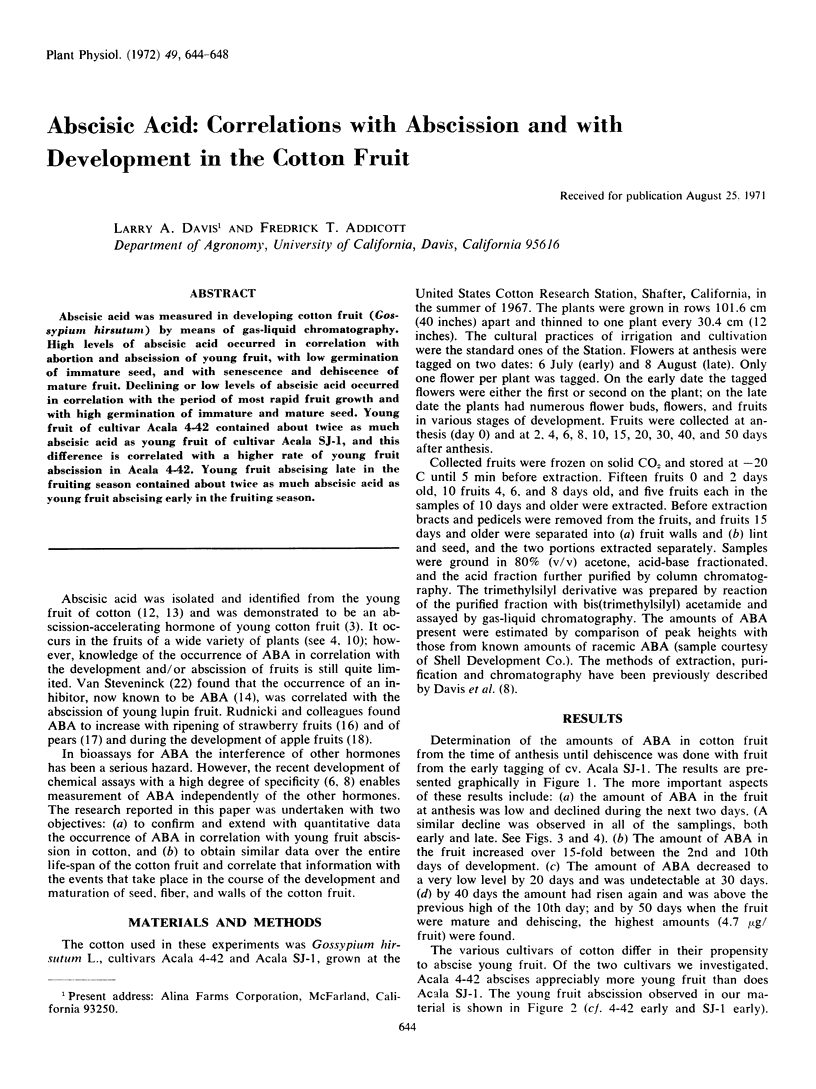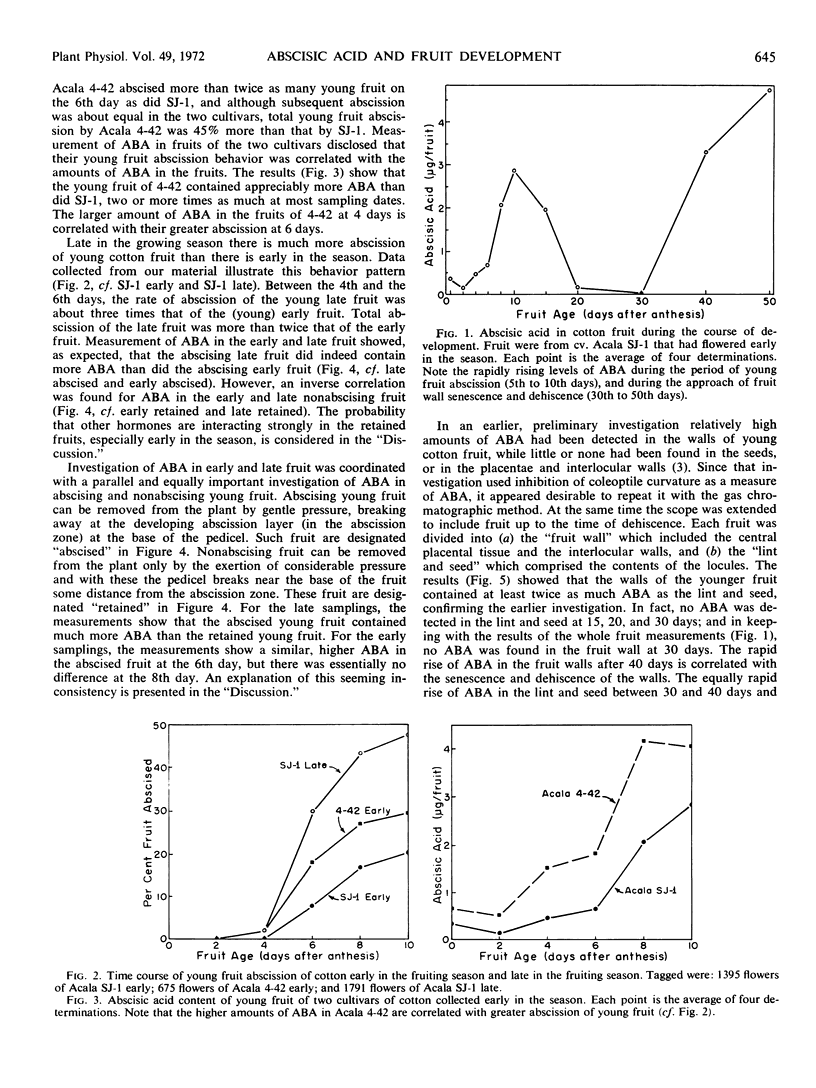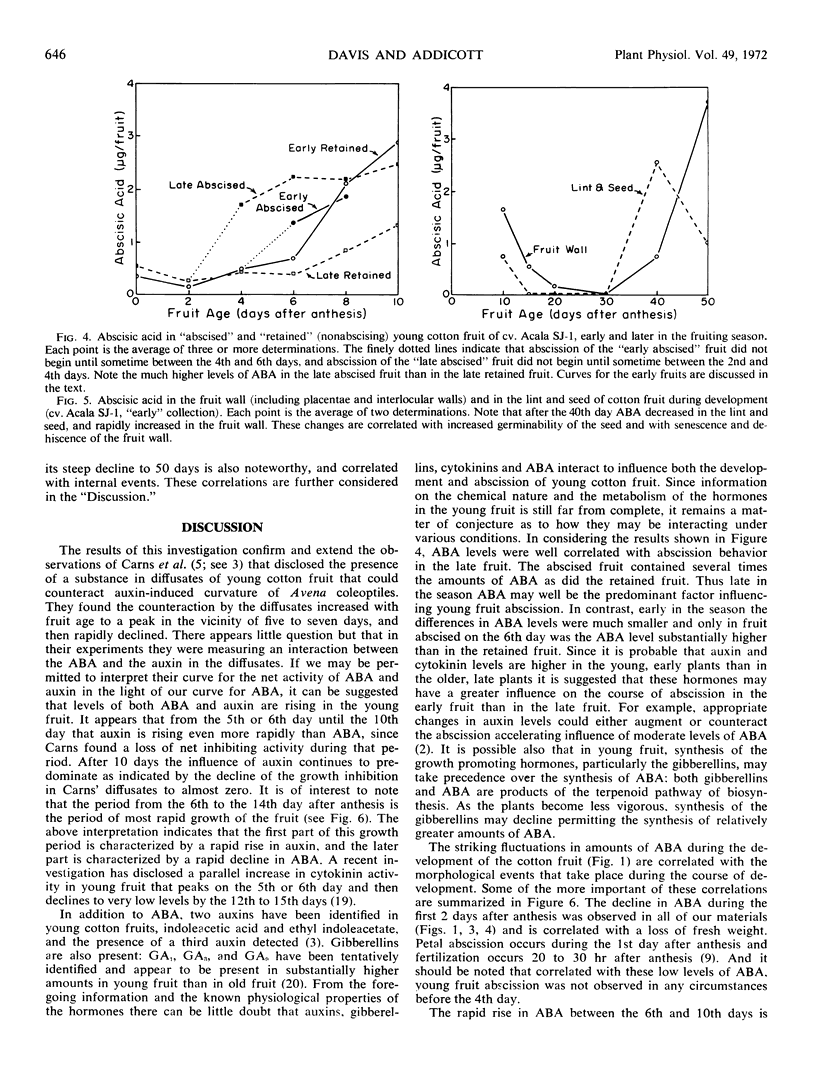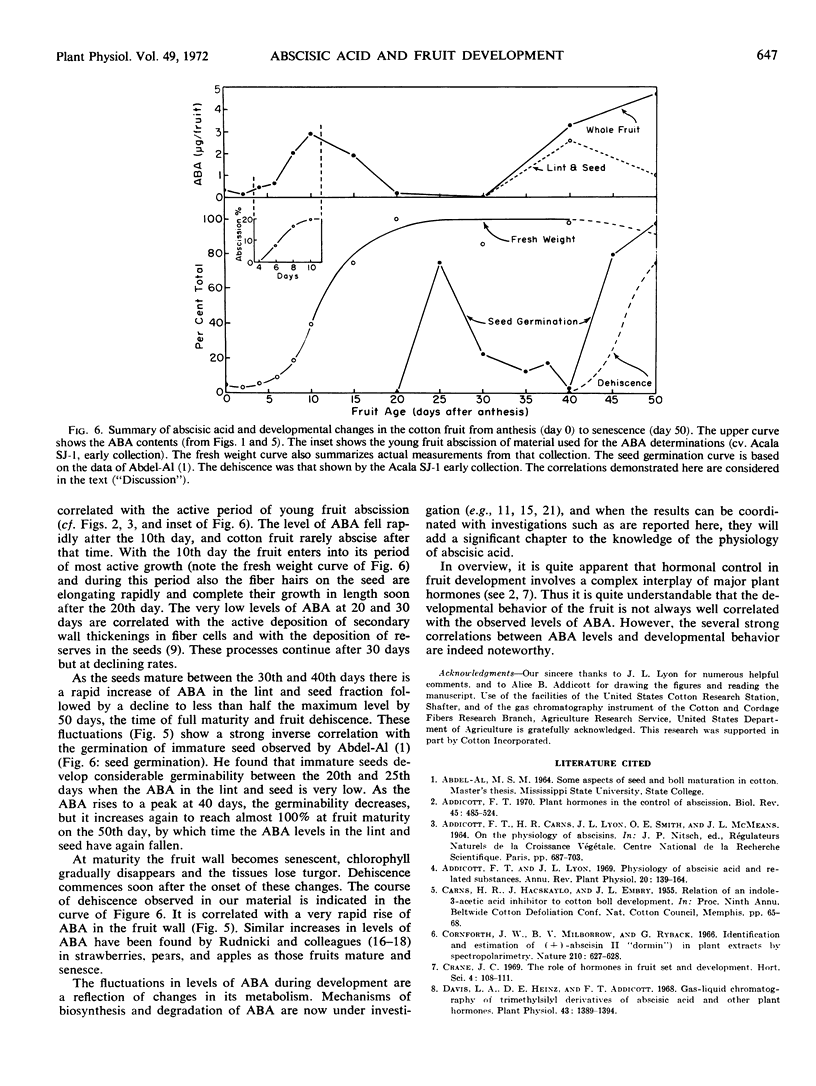Abstract
Abscisic acid was measured in developing cotton fruit (Gossypium hirsutum) by means of gas-liquid chromatography. High levels of abscisic acid occurred in correlation with abortion and abscission of young fruit, with low germination of immature seed, and with senescence and dehiscence of mature fruit. Declining or low levels of abscisic acid occurred in correlation with the period of most rapid fruit growth and with high germination of immature and mature seed. Young fruit of cultivar Acala 4-42 contained about twice as much abscisic acid as young fruit of cultivar Acala SJ-1, and this difference is correlated with a higher rate of young fruit abscission in Acala 4-42. Young fruit abscising late in the fruiting season contained about twice as much abscisic acid as young fruit abscising early in the fruiting season.
Full text
PDF




Selected References
These references are in PubMed. This may not be the complete list of references from this article.
- Davis L. A., Heinz D. E., Addicott F. T. Gas-liquid chromatography of trimethylsilyl derivatives of abscisic Acid and other plant hormones. Plant Physiol. 1968 Sep;43(9):1389–1394. doi: 10.1104/pp.43.9.1389. [DOI] [PMC free article] [PubMed] [Google Scholar]
- Ohkuma K., Lyon J. L., Addicott F. T., Smith O. E. Abscisin II, an Abscission-Accelerating Substance from Young Cotton Fruit. Science. 1963 Dec 20;142(3599):1592–1593. doi: 10.1126/science.142.3599.1592. [DOI] [PubMed] [Google Scholar]
- Robinson D. R., Ryback G. Incorporation of tritium from [(4R)-4-3H]mevalonate into abscisic acid. Biochem J. 1969 Aug;113(5):895–897. doi: 10.1042/bj1130895. [DOI] [PMC free article] [PubMed] [Google Scholar]
- Rudnicki R., Pieniazek J., Pieniazek N. Abscisin II in strawberry plants at two different stages of growth. Bull Acad Pol Sci Biol. 1968;16(2):127–130. [PubMed] [Google Scholar]


